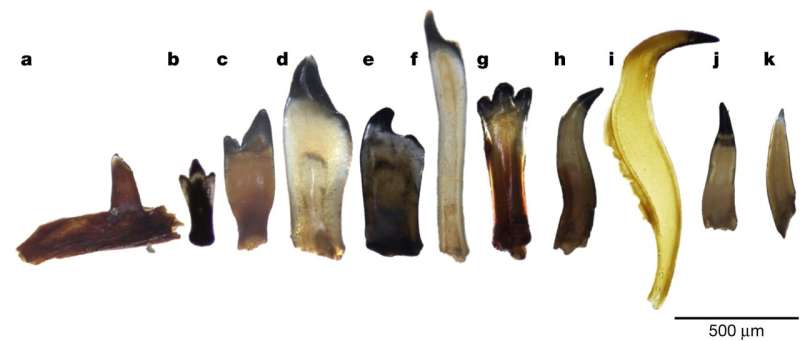October 6, 2023 report
This article has been reviewed according to Science X's editorial process and policies. Editors have highlighted the following attributes while ensuring the content's credibility:
fact-checked
peer-reviewed publication
trusted source
proofread
Study of mud cores from Lake Victoria suggests diversification of cichlid fish led to their success

A team of biologists affiliated with multiple institutions in Switzerland and Tanzania has found that early cichlid diversification in Lake Victoria led to their success in deep parts of the lake. In their study, reported in the journal Nature, the group studied four sediment cores obtained from the lake. Martin Genner, with the University of Bristol, has published a News & Views piece in the same journal issue, outlining the work done by the team on this new effort.
Prior research has shown that Lake Victoria, which is Africa's largest lake by surface area, formed approximately 17,000 years ago. Since that time, it has grown in both size and depth and as fish were introduced, and some of them thrived—there are currently more than 500 species of cichlid fish alone, for example. In this new effort, the research team analyzed the contents of four sediment cores from different parts of the lake to learn more about the history of the fish that have lived in the lake over thousands of years.
The research team found 7,623 fish tooth fossils representing fish living in the lake going back to when it was first formed, and they created a timeline of fish evolution in the lake. They found that in the early days of the lake, while it was still shallow, catfish, cichlids and carp-like cyprinoids made the lake their home. Later, as the lake grew deeper, they found that most of the fish species kept to the shallows—the exceptions were cichlids, which ventured into deeper water and diversified, allowing them to thrive.
The researchers suggest that cichlids were able to thrive not because they were the first to make their way to the lake in its early years, but because they were genetically predisposed to adapting to the lake after it was formed—they were more ecologically versatile. Genner notes that they had jaws that were more highly evolved than their competitors, and they were also highly proficient at hybridizing with other cichlid species—characteristics that helped them thrive in deeper parts of the lake.
More information: Nare Ngoepe et al, A continuous fish fossil record reveals key insights into adaptive radiation, Nature (2023). DOI: 10.1038/s41586-023-06603-6
Martin J. Genner, Cichlid fish seized an ecological opportunity to diversify, Nature (2023). DOI: 10.1038/d41586-023-03014-5
Journal information: Nature
© 2023 Science X Network





















